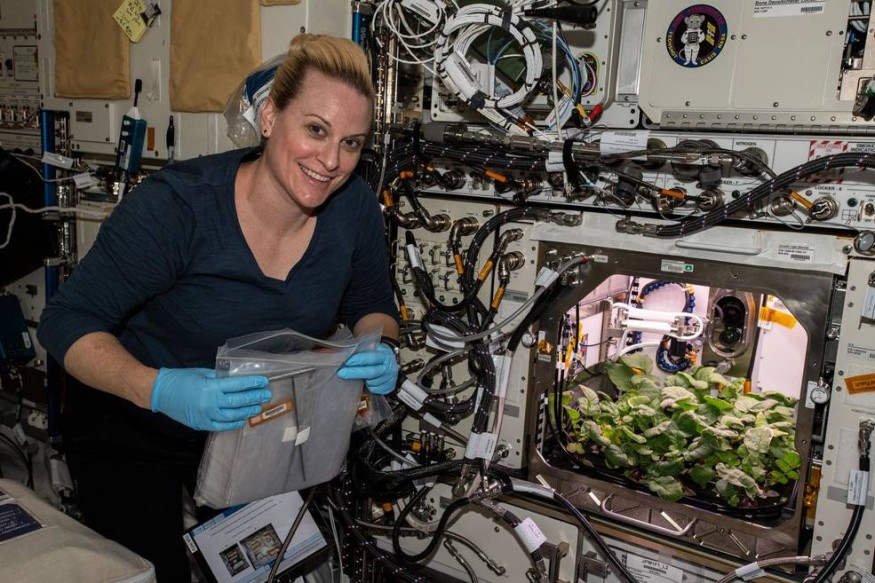Scientists claim that growing plants in space would help food production efforts for future long-term space missions on the Moon and Mars. A month after harvesting radishes grown in space, the astronauts aboard the International Space Station get to eat some of those radishes before sending back the remaining radishes to Earth for further analysis.
Growing plants in space are quite a challenge due to microgravity and scientists are still learning and continuing their study on the effects of microgravity on plants. This was the first time that radishes were harvested in space although scientists have been planting leafy vegetables in space for years now.
Astronauts Eat Radish Grown in Space
On November 30, 2020, astronauts in the ISS harvested the first radish grown in space. NASA astronaut and Expedition 64 Flight Engineer Kate Rubins carefully harvested the crop of 20 radish plants before planting the second batch which like the first batch, would take another 27 days to mature.

Now, they get to enjoy the radish as they were allowed to eat some of them before sending the rest back to Earth for further research. Growing plants in space are important to provide them with nutrients and a psychological boost, according to a report by Digital Trends.
Eating the same pre-packaged food every day could be psychologically wearing, known as food monotony. That is why astronauts love receiving care packages that are sent with equipment for ISS.
The scientists said that the radishes from space look great, wherein nine of them were given to the astronauts to eat and ten were frozen wrapped in aluminum foil for return to Earth.
They added that there is nothing to worry about whether the astronauts would have consumed bacteria from the radishes because the crops were grown in controlled conditions in the Advanced Plant Habitat in the ISS where the levels of water, fertilizer, and light could be monitored. They said that radishes grown in space were even cleaner than radishes grown on Earth.
As for the taste, astronaut Rubins said that the cosmic radishes were as tasty as the ones she used to grow in her own garden.
Growing Plants in Space
Growing plants in space have been challenging but it is necessary to keep the astronauts healthy as they travel and explore deep into space. Astronauts in the ISS have long studied how to cultivate crops inside the space station to harvest fresh produce.
They used technologies such as the Vegetable Production System, known as Veggie, and Advanced Plant Habitat (APH). Veggie is a space garden residing inside the space station which helps NASA to study plant growth in microgravity which is only as big as carry-on luggage that can hold six pants.
Each plant is grown in a pillow filled with clay-based growth media and fertilizer where the plants will get their water, nutrients, and air in a healthy balance around the roots, according to NASA.
On the other hand, the APH is also a chamber for plant growth that uses LED lights that is just like Veggie with its clay substrate for water, nutrients, and air distribution. But unlike Veggie, APH is enclosed and automated with cameras and over 180 sensors that are in active contact with the team of astronauts growing the plants, so day-to-day care is not needed from the crew.
NASA said that the color of LED lights used in APH is red, green, and blue. To allow for nighttime imaging, they also use white, far-red, and even infrared.
Check out more news and information on Space on Science Times.










